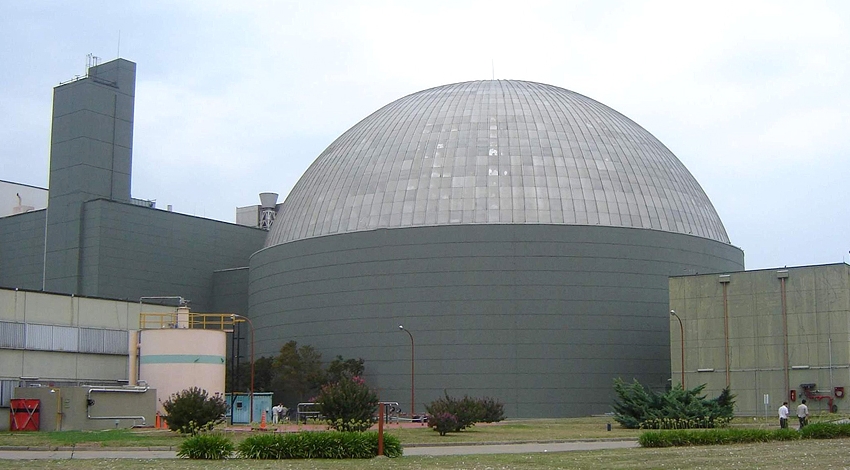The nuclear lobby has spread throughout the world that nuclear power is friendly to the environment. In a previous note, trying to demystify this assertion, we show how uranium exploitation harms it. Continuing supported by the United Nations Environment Program (UNEP), we will see the damages of other nuclear activities.
Fuel Core Production
The uranium oxide concentrate produced in the leaching plant near the mine must be concentrated and converted into a volatile compound, uranium hexafluoride, so that it can be used as feed material for enrichment plants. The radiobiological repercussions of these operations are due to the emission of radionuclides into the environment, both into the atmosphere and into waterways.
Uranium enrichment
The increase in the concentration of the uranium-235 isotope, which is the most fissile isotope, is necessary to manufacture the fuel for the reactors. The concentration of uranium-235 in natural uranium is approximately 0.7%. You have to take it to 2 to 4%. Large-scale enrichment technologies are based on gaseous diffusion or centrifugation of uranium isotopes in the form of uranium hexafluoride.
The radiological repercussions in this phase are due to the discharge of uranium isotopes into the environment. The large amounts of electricity used in the gaseous diffusion enrichment process emit considerable amounts of greenhouse gases. Centrifuge plants require about one tenth of the electricity that diffusion plants need.
Fuel manufacturing
In a fuel fabrication plant, enriched uranium hexafluoride is converted to powdered uranium dioxide, which is then pelletized and sintered to achieve a solid of the desired density. The finished pellets are inserted into zirconium alloy tubes to which end caps are welded, thus forming hermetic fuel needles. Said needles, already finished, are assembled forming fixed assemblies called fuel elements. Radiological effects from fuel manufacturing can result from the emission of uranium and thorium isotopes.
Reactor operation
For suddenly the safety of the reactors consumes electricity, this is one of the paradoxes of the nuclear industry, in order to generate electricity safely, the plants need a significant and constant supply of electricity, electricity that is normally produced by power plants. that run on fossil fuels.
Nuclear power plants consume large amounts of water, both the reactors to cool cores and condensers, as well as the spent fuel pools, need abundant water, part of this water returns to the source channel superheated, affecting aquatic life.
During the operation of power reactors, radionuclides are formed by fission of the nuclear fuel and by neutron activation of the materials in the walls of the structure. Most of the fission products remain in the fuel elements, but a small part may escape into the coolant through defects in the fuel cladding. Most of the radioactive isotopes that escape into the coolant or moderator are removed by water treatment systems in gaseous and liquid form. However, it is possible that some of the radioactive material will eventually be released into the environment.

Nucleoeléctrica Argentina SA, the company that manages nuclear power plants in Argentina, acknowledges:
Nuclear power plants… produce artificial radioactive elements (such as Sr-90, I-131, Cs-137, Am-241) not previously existing in the natural environment, which can be dispersed in the environment. Once there, they can be transmitted to food through various routes: through the air or water…, the marine environment in fish and shellfish, and food in the case of livestock.
Among the many radioactive products of fission and activation generated during the operation of the reactors, the environmental repercussions of tritium, carbon-14 and radionuclides in the form of particles that are discharged into the atmosphere and waterways are of particular interest.
Of particular interest are long-lived radionuclides, such as carbon-14, the radiological exposure commitments derived from their accumulation in the environment are considerably higher than those derived from noble gases and tritium.
Krypton-85 deserves special attention because of the intrinsic difficulty of its control and because of its essentially non-reactive and mobile nature in the environment. Some radionuclides are radiologically significant in local environments. The noble gases, tritium in the form of tritiated water vapor, carbon-14 and iodine pass into the environment in the form of airborne effluents.
The detriment to human health from nuclear power generation is primarily due to occupational exposure to gamma rays from fission and activation products.
The radionuclides released into the environment during the operation of the reactors undergo a series of complex physical, chemical and biological processes, before reaching man. Such processes depend on the location of the reactor, the meteorological conditions and the different routes of exposure.
Radionuclides discharged into liquid effluents can cause ills in people through pathways such as water ingestion and fish consumption, for discharges to fresh water, and consumption of marine fish and shellfish, for regarding the discharges in salty waters.
Part of the population may also be exposed in coastal areas to external irradiation by radioactive sediments.
This type of diffuse pollution, both aerial and aquatic, is almost impossible to control, minimize or restore, since there is no technical solution for the moment that guarantees the non-destruction of the surrounding habitat.
Continuing with these notes, we will see in the next note how the management of nuclear waste, the dismantling of nuclear facilities, and the transport of radioactive materials affect the environment.
